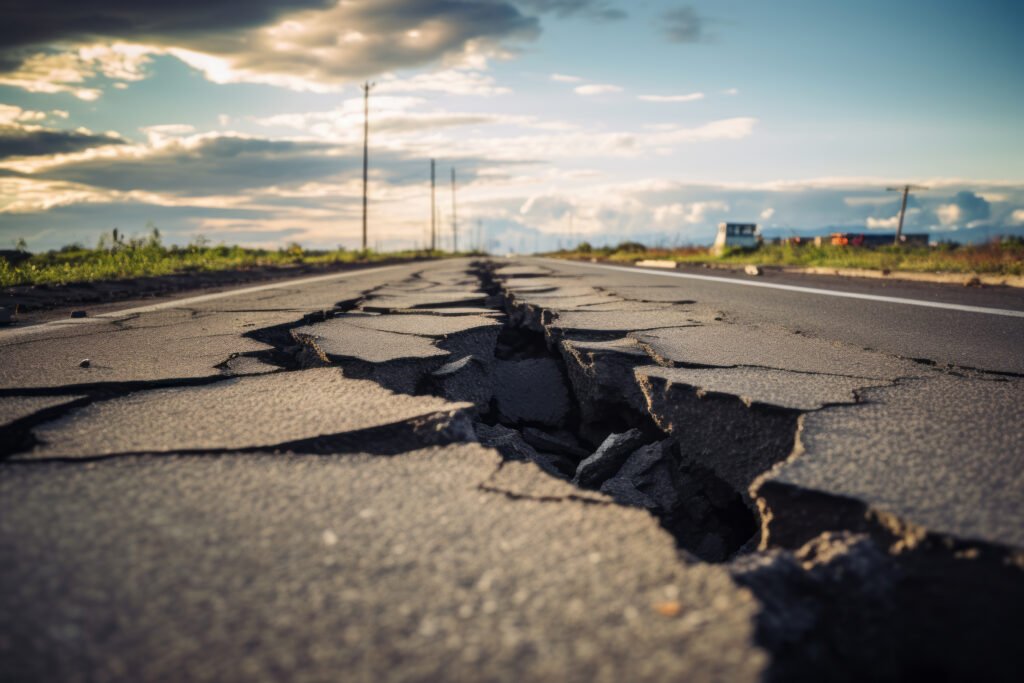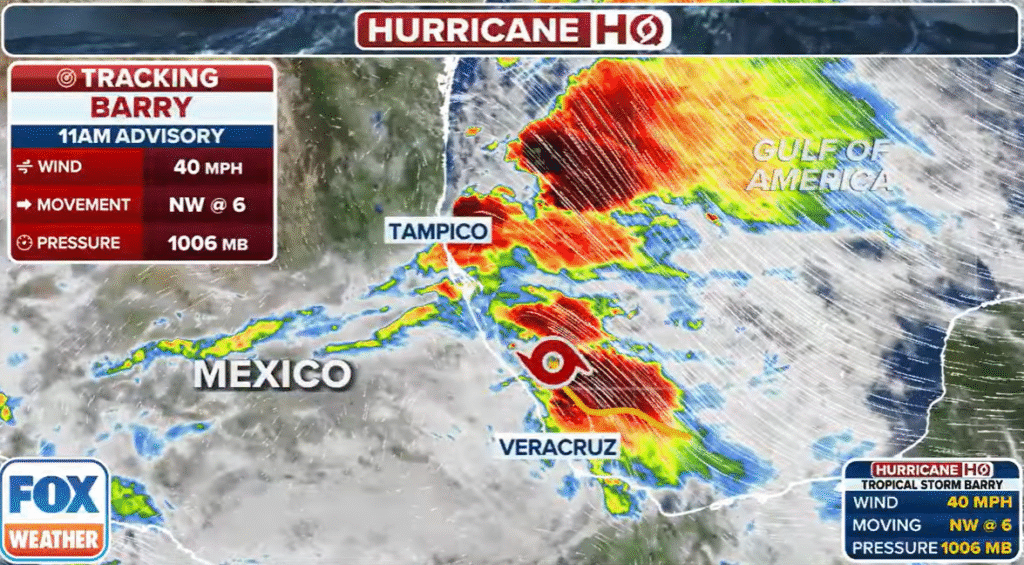
Late Saturday night, a rare seismic event rippled through northern New Jersey and the greater New York City metropolitan area, startling millions and sparking a wave of community concern, scientific analysis, and online banter. The magnitude 3.0 earthquake, centered in Hasbrouck Heights, NJ, briefly turned one of America’s busiest urban corridors into a region united by surprise—and for many, a touch of worry.
Below, we chronicle the full story behind the event: the science, the local response, firsthand accounts, expert insights, and what this quake tells us about the seismic risks that linger beneath the Northeast’s densely populated landscape.
A Sudden Shake: Timeline and Details of the Quake
On the night of August 2, 2025, as many settled in for the weekend, the ground beneath Hasbrouck Heights—an otherwise quiet Bergen County suburb—began to tremble. According to the United States Geological Survey (USGS), the tremor struck at approximately 10:18 to 10:23PM local time, reaching a magnitude of 3.0. Its epicenter was pinpointed less than 8 miles west of Central Park, Manhattan, with the quake’s hypocenter measured at a depth of about 6 miles (10km) below the surface.
The event, though brief, was felt widely—a mild shaking sensation, sometimes described as a fleeting sway, prompted thousands of residents to pause, question, and then flood social media and emergency hotlines with reports.
Local Reactions: Shock, Humor, and Community Response
“The whole building shook—just for a second, but enough to make me stand up.”
Residents of Hasbrouck Heights and neighboring towns described the sensation as unsettling but not violent. In Manhattan and the boroughs, some initially suspected a large truck, subway rumble, or even construction.
- “The lamp quivered and my cat jumped off the couch. I wondered if I was imagining it,” said Sonia Lopez, a resident of Jersey City.
- “I saw glasses rattling on the counter. For a second, I thought a train had derailed nearby,” recounted John Patel, who lives in north Bergen County.
Despite the surprise, there were no reports of injuries or significant property damage—a fact that authorities quickly confirmed.
The Social Media Frenzy and Official Reassurances
As news spread, #NYCEarthquake and #NJQuake began trending on X (formerly Twitter). Many users turned to humor to downplay their nerves:
“Empire State Building: I AM FINE,” read a now-viral post from the skyscraper’s official account.
City and state agencies mobilized rapidly, dispatching teams to inspect infrastructure and reminding the public to remain calm.
Emergency Response: Swift Action and Cautious Monitoring
Minutes after the tremor, emergency management teams in both New Jersey and New York City began fielding calls and conducting checks at critical sites: bridges, tunnels, subways, and hospitals. The Port Authority of New York and New Jersey issued an immediate statement:
“There are no reports of structural damage to regional transportation hubs. Our teams are conducting standard safety inspections out of an abundance of caution.”
Local police and fire departments reminded residents that while small earthquakes rarely inflict major harm, it’s always prudent to check for home hazards, such as fallen shelves, cracked walls, or shifted foundations.
Key advisories included:
- Inspecting homes and workplaces for minor damage.
- Reporting only urgent hazards to emergency services to keep lines open for critical needs.
- Preparing for the possibility of aftershocks, although these were considered unlikely in an event of this size.
Understanding the Science: Why Did This Happen Here?
Seismologists emphasize that while earthquakes are rarer in the Northeast compared to the West Coast, tectonic stresses underneath the region do cause occasional tremors.
The culprit in this event appears to be the Ramapo Fault system, a series of ancient, east-west oriented fractures that stretch across northern New Jersey into New York. Though dormant for centuries, these faults can slip occasionally as stresses build up.
Dr. Maria Sandoval, a geophysicist with the Lamont-Doherty Earth Observatory, explains:
“The 3.0 magnitude quake in Hasbrouck Heights is a reminder that the Appalachian crust—though old and stable compared to California’s active faults—can still release built-up stress. The chance of a destructive quake here is low, but not zero. That said, events like this are scientifically significant and an important wakeup call to prepare, even if the risk is small.”
Why So Mild?
A 3.0 magnitude quake is considered “minor”—strong enough to be felt by many people indoors but rarely causing damage. Most structures in the region are built to higher (or non-seismic) building codes, and the density of bedrock beneath New York and New Jersey helps dampen the vibrations.
To put it in context:
- Magnitude 2.0-3.9 quakes are usually felt but cause little or no damage.
- Magnitude 4.0 or higher is considered more serious and can cause minor damage if centered in an urban area.
The Rarity—and History—of Earthquakes in the Tri-State
Large earthquakes are not unheard of in the Northeast, but they are uncommon:
- The last significant quake in the greater NYC area was a 5.8 magnitude event in 2011, centered in Virginia but felt across the entire East Coast.
- Historical records show a 5.2 quake hit near Brooklyn in 1884, reportedly breaking windows and chimneys.
- Minor tremors (like last night’s) occur every few years, but most go unfelt.
Dr. Sandoval adds:
“For most residents, these quakes are a curiosity, not a threat. But they underscore the importance of keeping emergency plans and facilities up to date.”
Community Perspective: Voices From the Epicenter
We spoke to dozens of residents in Hasbrouck Heights, Bergen County, and New York City to capture the range of responses.
Some representative accounts:
- Susan Rei, Hasbrouck Heights:
“It was a quick jolt. At first, I thought a heavy item had fallen on the roof. Only when my neighbors ran outside did I realize it was something bigger. We checked in with elderly residents on our street to make sure they were okay.” - Malik Thompson, Harlem:
“My whole building creaked. People on my floor poked their heads out into the hallway. Nobody panicked—but everyone was definitely talking about it afterward.” - Rosa Jimenez, Brooklyn:
“I was putting my toddler to bed. The windows rattled a bit, and I remembered we’d had a quake in 2011. It’s a weird feeling—nothing you can do but wait and see.”
Across the board, New Yorkers and New Jerseyans were more puzzled than panicked—resilient as ever, but watchful for news.
Looking Ahead: Risks, Preparedness, and Public Guidance
Could it happen again?
Seismologists caution that aftershocks are possible but unlikely after a minor earthquake. However, the event highlights a broader need for preparedness in an urban region crisscrossed by infrastructure and home to more than 20 million people.
Residents are urged to:
- Know the emergency procedures at home, work, and school.
- Secure heavy items that could topple during a shake.
- Stock basic supplies (water, flashlight, first-aid kit) just as they would for blackout or storm.
Local governments reiterated their commitment to public safety, noting ongoing investments in early-warning systems, building inspections, and emergency response coordination.
The Lighter Side: How New York and New Jersey Meme’d the Quake
Within minutes, New Yorkers and New Jerseyans showcased their trademark humor online:
- “Is this Jersey’s way of asking for more attention?”
- “As if the city needed another thing to worry about.”
- “Empire State Building checked in—says tremors are just ‘allergies, nothing more.’”
In a city defined by its ability to absorb the unexpected, the night’s quake became part of the cultural tapestry, inspiring everything from tongue-in-cheek safety tips to artful TikToks replaying the moment.
Expert Voices: Why These Small Quakes Matter
Dr. Kevin Armstrong, an NYC-based urban planner, says the biggest lesson from a minor quake isn’t fear—but focus:
“We’ve been lucky. A 3.0 is a teachable moment—it jogs hazard planners and residents alike. Ensuring that emergency contacts are updated, go-bags are ready, and building inspections are routine: these are simple steps that can make a difference in any disaster, big or small.”
He added that earthquakes—no matter the size—should always prompt a review of safety practices, especially in older buildings or densely packed neighborhoods.
No Major Damage: The Official Statement
By early Sunday morning (August 3, India Standard Time), officials from both states and New York City confirmed that there was no major damage or injuries reported. Trains, subways, and airports continued operations without disruption. The governors of both states issued joint remarks:
“Our agencies responded swiftly and there has been no threat to public safety. We thank first responders, utilities, and transit workers for their rapid assessments and continued vigilance.”
A Wakeup Call, Not a Disaster
The magnitude 3.0 earthquake centered in Hasbrouck Heights was a mild but memorable reminder of the region’s hidden geological dynamics. For most, it was a story of momentary shock, quick camaraderie, and swift reassurance—all hallmarks of life in the New York-New Jersey corridor.
While scientific consensus is clear that severe earthquakes remain rare in the region, events like this serve as a valuable opportunity to reflect on preparedness, resilience, and the bonds that tie together these vibrant, ever-surprising communities.
If you felt the earthquake:
Check for minor damage, stay alert for updates, and, above all, remain calm. New York and New Jersey have been here before—and, as always, will stick together, come what may.


